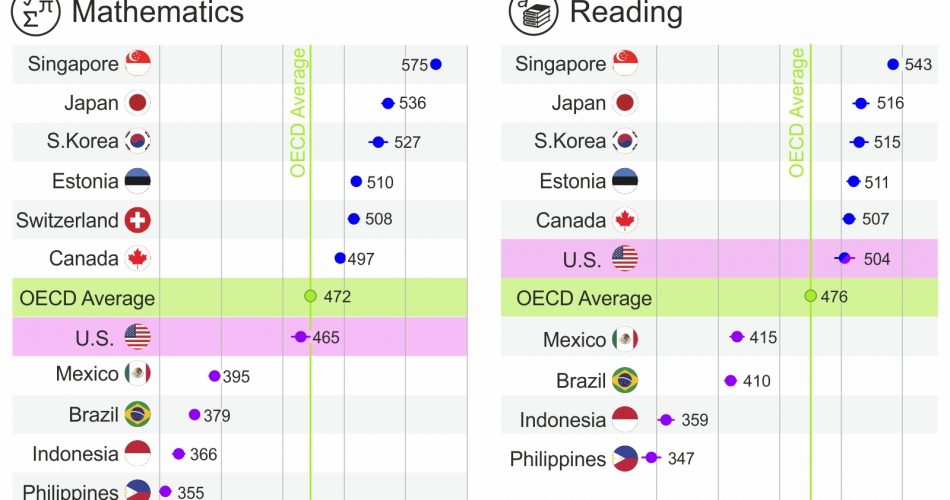In a world where education plays a pivotal role in shaping the future, the Programme for International Student Assessment (PISA) offers a unique lens to compare educational outcomes globally. Brought to you by Smartick, an AI-powered math training app, this article delves into the performance of 81 countries in mathematics, science, and reading, with a specific focus on how the United States measures up against its peers in the latest PISA 2022 results.
This analysis follows our recent article, “PISA 2022: Visualizing the Global Educational Panorama,” where we explored key trends, challenges, and successes in international education.
Mathematics Performance in PISA 2022
The United States, scoring close to the OECD average in mathematics, is a key highlight. Singapore leads the pack with an impressive 575, showcasing not only mathematical proficiency but also a holistic understanding of its real-world applications. In contrast, the U.S. secures a score of 465, placing it below the OECD average but ahead of Mexico, Brazil, Indonesia, and the Philippines.
Reading and Science Proficiency
While the U.S. scores above the OECD average in reading (504) and science (499), Singapore continues to outshine other nations with scores of 543 in reading and 561 in science. This disparity emphasizes the need for a comprehensive approach to education that goes beyond mean scores.
East Asian Dominance
The dominance of East Asian countries, including Singapore, Japan, Korea, and others, in mathematical proficiency is noteworthy. These nations consistently showcase excellence in PISA assessments, signaling a regional stronghold in mathematical education.
As we navigate the complex landscape of global education, PISA 2022 highlights both achievements and challenges. While the United States performs reasonably well, the success of East Asian nations underscores the potential for improvement. Beyond the pandemic, the data suggests that addressing underlying educational challenges is crucial for sustained progress. Stay tuned for more in our series of educational visualizations, providing deeper insights into the ever-evolving world of international education.


